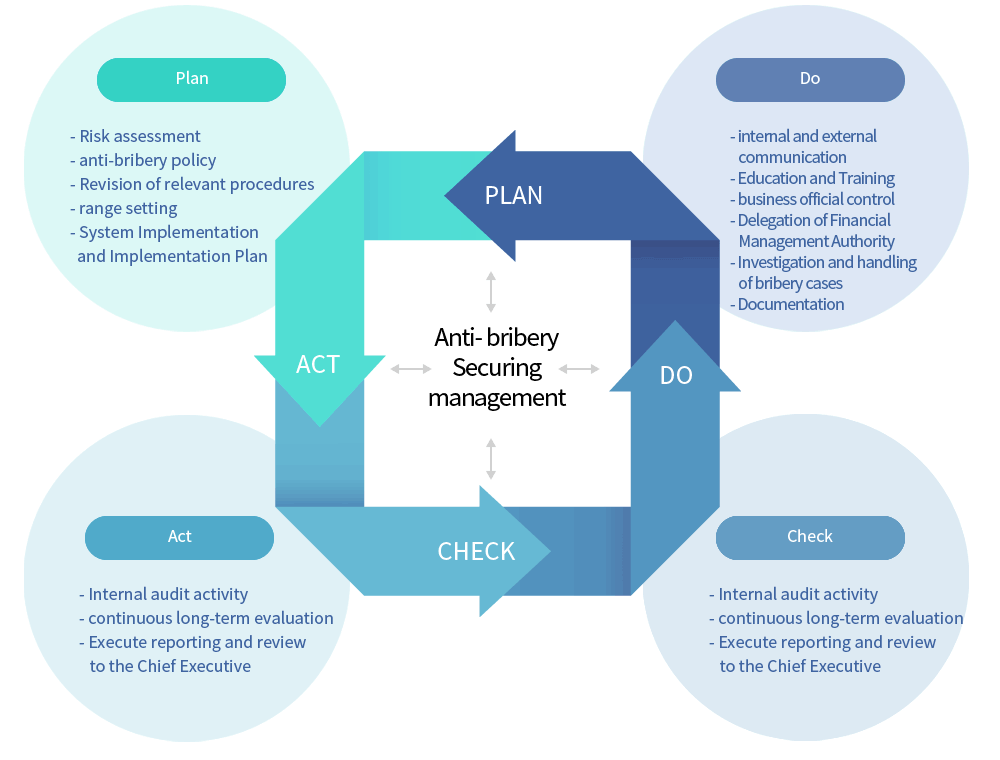ISO 37001 certification system?
Activities to prevent corruption took place worldwide, starting with FCPA (1977) of the United States, the OEDC Anti-bribery Convention, the UN Convention against corruption, and the Bribery Act of the United Kingdom, and on October 15, 2016, the International Standard ISO 37001, which was determined by the international community's efforts.ISO 37001 is an international standard established by the OECD and the TransparencyInternational, which participates in 37 countries around the world and publishes country-specific corruption indexes every year.
The Anti-bribery Management System prevents increased business, product costs, and reduced service trust caused by corruption, and establishes a integrity, transparency, openness and compliance culture through this system. It is applicable to all organizations, from public institutions to private companies. The Anti-bribery Management System is a system that pursues the integrity of the organization and the voice of customers by achieving anti-corruption goals and policies through analyzing and managing corruption risks.
Necessity
- Strengthening policy on bribery and corruption
: The importance of Anti-Bribery efforts has been emphasized since the enactment of the Act on prohibition of Anti-Bribery and graft act(Kim Young-Ran Act). - Proof of the organization's anti- bribery efforts
: Business owners can be exempted if they prove their efforts to prevent corruption according to Article 24 of the anti-graft law - international trust
: Meet the needs of domestic and international partners through the equal and rigorous ISO 37001 standard in the international community
Expectation effect
- Reduced risk of violations of domestic and foreign regulations related to bribery and corruption
- Increase customer confidence by securing integrity
- Improve partnership with domestic and overseas partners
- Satisfy Anti-bribery System that is important in various bids of public institutions
- Prevention of legal violation costs through continuous monitoring and performance evaluation
Basic model

- Plan : Identify anti-corruption risks and opportunities, and establish anti-corruption goals and processes necessary to deliver results consistent with anti-corruption policies.
- Do : Execute process according to plan
- Check : Monitoring and measuring the process for the anti-corruption policy, including the organization's commitment, anti-bribery goals, and operational criteria, and reporting the results
- Act : Action taken for continuous improvement
Composition of standard requirements
Certification scope
There is no distinction of scope of certification.





